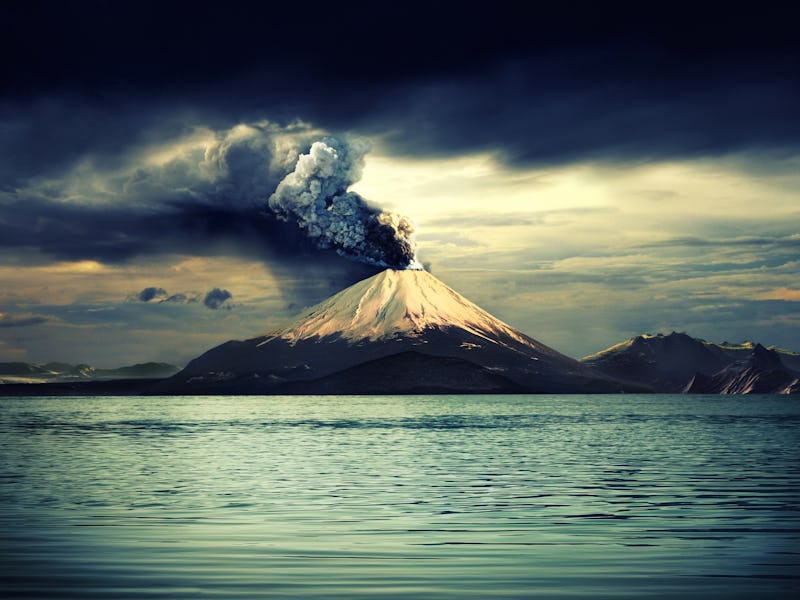Is it safe to tour an active volcano?
The catastrophe on White Island raises questions about allowing visitors near eruption hotspots.

After its eponymous volcano erupted on Monday, ash coated New Zealand’s White Island, smothering the surface. At the time, the tiny speck of land in northeastern New Zealand was full of tourists curiously eyeing the active volcano. At least six people are known to have been killed in the eruption — the number could rise to 14, CCN reports.
In the aftermath of the catastrophe, rescuers and visitors have raised questions about why people were allowed so close to an active volcano in the first place. The New Zealand authorities have even opened a police investigation into why anyone was there, the BBC reports.
It’s a good question. Three weeks before the eruption, seismologists raised the volcano’s alert level to “moderate to heightened volcanic unrest.” And last week, GeoNet, a geological hazard monitoring group, said that White Island “may be entering a period where eruptive activity is more likely than normal.” Still, it had said that “the current level of activity does not pose a direct hazard to visitors.”
Volcanoes are known for unpredictability, and despite these forecasts, it was impossible to predict exactly when — or if — White Island would erupt.
White Island mid-eruption of 9 December, 2019. GeoNet captured the moment via webcam.
“You can never be totally safe with an active volcano,” geologist Alan Clewlow told CNN. “We follow the guidance of local guides and authorities.”
But White Island volcano isn’t the only place tourists can get up-close to active volcanoes. Nor is it the first time these encounters have proven fatal.
Encountering active volcanoes
In July 2019, a hiker died after a series of extremely active volcanoes erupted near the small Italian island of Stromboli, CNN reported at the time.
Active volcanoes are popular sites for tourists — you might even have been to one. The United States’ beloved Yellowstone National Park sits right on top of an active volcano. That’s precisely why the park is known for its geysers — including Old Faithful — and hot springs. The last time Yellowstone erupted was 640,000 years ago.
Old Faithful in Yellowstone is an example of volcanic activity -- and a hot tourist destination.
Sakurajima in Japan, by contrast, erupts hundreds of times each year — though most eruptions only affect the top of the volcano. During some larger explosions, people living nearby have to deal with ash that rains down and covers the surrounding area. Its last major eruption was in 1914 — it killed 58 people.
Scientists predict that Sakurajima will see another major eruption in the next 30 years, according to a 2016 BBC report. To prepare, the nearby city of Kagoshima has an evacuation plan ready to go should the worst occur.
But the question of whether it’s safe to visit an active volcano might not depend on whether it is likely to erupt.
Active volcano dangers
Aside from the chance of a volcano erupting, these geological features can pose other risks to people keen to visit.
One risk comes stems from an eruption’s aftermath. The ash and debris that cover the outside of volcanoes can cause deadly mudslides, according to the US Geological Survey.
Mount Cleveland in Alaska, with gas and steam plume rising from its summit.
Essentially, landslides are large masses of moving dirt — rock and soil, wet or dry. They tend to start when something spurs an avalanche or rock fall. Earthquakes, heavy rains, or volcanic activity can all trigger them.
Those tumbling rocks break down as they travel. The resulting fragments can range from pebbles to boulders hundreds of meters wide. As gravity takes hold, the waves of rock and soil fall, slide, or flow rapidly.
“Landslides are common on volcanic cones because they are tall, steep, and weakened by the rise and eruption of molten rock,” the USGS says.
As magma from eruptions releases volcanic gases, they dissolve in groundwater, altering minerals and weakening rock. Also, thousands of layers of lava and rock fragments can cause fault zones to shift more frequently.
A chain of events can also cause tragedy — as was the case during the most deadly volcano landslide in history. In 1792, sliding debris from Mount Mayuyama near Unzen Volcano in Japan crashed into the Ariaka Sea. The force generated a tsunami that reached the opposite shore and killed nearly 15,000 people.